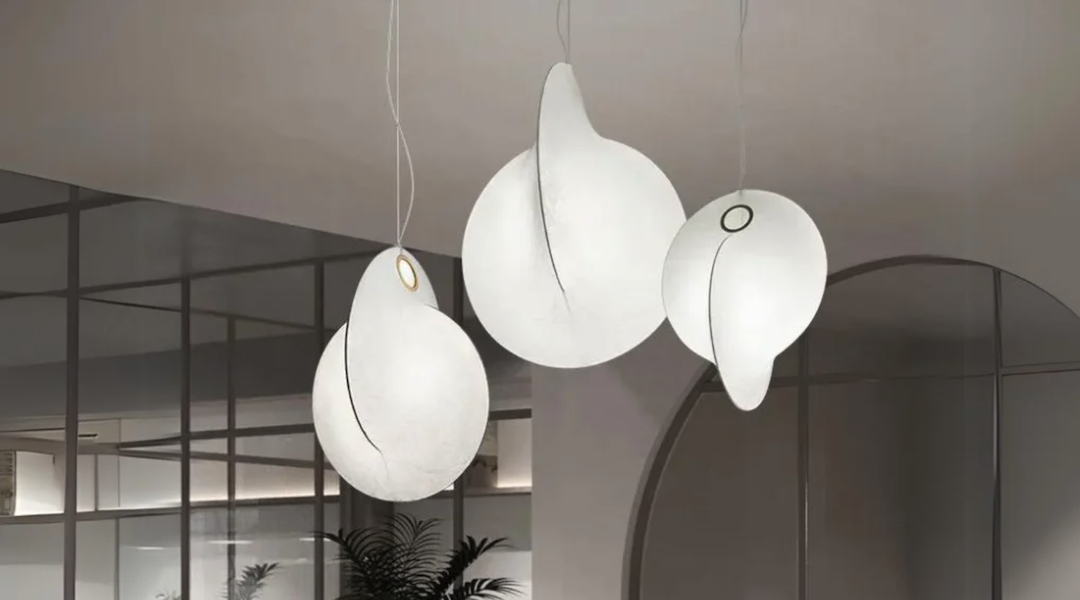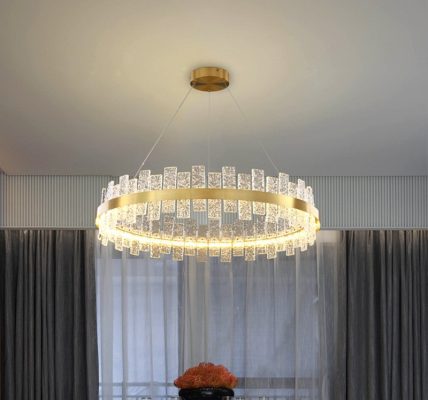Overlapping pendant lights have emerged as a captivating trend in contemporary interior design, offering a unique blend of functionality and aesthetic appeal. These fixtures, which hang from the ceiling at varying heights and positions, create a dynamic visual effect that can transform any space. The interplay of light and shadow produced by overlapping pendants not only enhances the ambiance but also adds depth and character to a room.
As homeowners and designers alike seek innovative ways to elevate their interiors, overlapping pendant lights Zomier provide an opportunity to make bold statements while maintaining a sense of warmth and intimacy. The versatility of overlapping pendant lights is one of their most appealing attributes. They can be used in various settings, from cozy dining areas to expansive living rooms, and can complement a wide range of design styles.
Whether you prefer a minimalist aesthetic or a more eclectic approach, overlapping pendant lights can be tailored to fit your vision. By understanding the principles behind their selection and arrangement, you can harness the power of these fixtures to create a stunning focal point that draws the eye and enhances the overall atmosphere of your space.
Choosing the Right Pendant Lights for Your Space
Selecting the appropriate pendant lights for your space involves considering several factors, including size, style, and function. The scale of the pendants should be proportionate to the dimensions of the room. For instance, in a spacious dining area with high ceilings, larger pendants or clusters of smaller ones can create an impactful visual presence.
Conversely, in a compact kitchen or nook, smaller pendants may be more suitable to avoid overwhelming the space. Additionally, the height at which the lights are hung plays a crucial role; they should be positioned to provide adequate illumination without obstructing sightlines or creating an oppressive atmosphere. Style is another critical consideration when choosing pendant lights.
The market offers an extensive array of designs, from sleek and modern to ornate and vintage-inspired. For a contemporary look, consider geometric shapes or metallic finishes that reflect light and add a touch of sophistication. On the other hand, if your space leans towards a rustic or bohemian aesthetic, you might opt for woven materials or fixtures with an artisanal quality.
The color palette of the pendants should also harmonize with the existing decor; neutral tones can blend seamlessly, while bold colors can serve as eye-catching accents that inject personality into the room.
Arranging Pendant Lights for Overlapping Effect
The arrangement of overlapping pendant lights is crucial in achieving a cohesive and visually appealing design. One effective approach is to create a cluster of pendants at varying heights, which can add dimension and interest to the space. This technique not only draws attention but also allows for a more even distribution of light throughout the area.
When arranging the pendants, consider using a mix of sizes and shapes to enhance the visual complexity. For example, pairing a large globe pendant with smaller cylindrical fixtures can create an engaging contrast that captures the eye. Another important aspect of arrangement is spacing.
The distance between each pendant should be carefully considered to ensure that they do not appear overcrowded or disconnected. A general rule of thumb is to leave at least 12 to 18 inches between each fixture, depending on their size and the overall scale of the arrangement. Additionally, consider the layout of the room; aligning pendants over key areas such as dining tables or kitchen islands can create a sense of purpose and functionality while enhancing the overlapping effect.
Creating a Focal Point with Overlapping Pendant Lights
Overlapping pendant lights can serve as striking focal points within a room, drawing attention and anchoring the design. To achieve this effect, it is essential to select pendants that not only complement each other but also stand out against their surroundings. For instance, if your space features neutral walls and furnishings, incorporating bold-colored or uniquely shaped pendants can create a dramatic contrast that captures interest.
The use of lighting as a focal point can also guide the flow of movement within the room, directing attention toward specific areas such as dining spaces or seating arrangements. In addition to color and shape, consider the arrangement’s overall composition when creating a focal point with overlapping pendant lights. A well-thought-out layout can enhance visual balance and harmony within the space.
For example, if you have a long dining table, positioning a cluster of pendants directly above it can create an inviting atmosphere for gatherings while simultaneously serving as an artistic centerpiece. Furthermore, layering different types of lighting—such as combining pendant lights with wall sconces or recessed lighting—can amplify the focal point’s impact and contribute to a well-rounded lighting scheme.
Using Overlapping Pendant Lights to Define Different Areas
One of the most effective uses of overlapping pendant lights is their ability to delineate different areas within an open-concept space. In homes where rooms flow seamlessly into one another, pendant lights can provide visual cues that help define distinct zones without the need for physical barriers. For instance, in a combined kitchen and dining area, hanging a cluster of pendant lights above the dining table can create a sense of separation from the cooking space while still maintaining an open feel.
When using overlapping pendant lights to define areas, consider their placement in relation to furniture arrangements and traffic patterns. Positioning pendants over key functional areas—such as workspaces or seating arrangements—can enhance usability while reinforcing spatial boundaries. Additionally, varying the height and style of pendants in different zones can further emphasize their unique functions; for example, using sleek modern pendants over a kitchen island while opting for more decorative fixtures above a dining table can create distinct atmospheres tailored to each area’s purpose.
Incorporating Overlapping Pendant Lights in Different Room Styles
Overlapping pendant lights are remarkably adaptable and can be seamlessly integrated into various room styles, from industrial lofts to traditional homes. In industrial spaces characterized by raw materials and open layouts, metal or Edison bulb-style pendants can enhance the aesthetic while providing ample illumination. The use of multiple fixtures in varying heights can accentuate the high ceilings often found in such environments, creating an inviting yet edgy atmosphere.
In contrast, more traditional or farmhouse-style interiors may benefit from softer designs that incorporate natural materials like wood or glass. Here, overlapping pendant lights with vintage finishes or intricate detailing can add warmth and charm while maintaining functionality. By selecting fixtures that resonate with the overall design ethos of the room, you can create a harmonious blend that elevates both style and comfort.
Tips for Installing Overlapping Pendant Lights
Installing overlapping pendant lights requires careful planning and execution to ensure safety and aesthetic appeal. Begin by determining the ideal height for each fixture; generally, pendants should hang 30 to 36 inches above surfaces like dining tables or kitchen islands to provide adequate illumination without obstructing views. If you are installing multiple pendants in a cluster, consider using adjustable cords or chains that allow for customization during installation.
Before installation, it is essential to assess your electrical setup and ensure that it can accommodate multiple fixtures without overloading circuits. Consulting with a licensed electrician may be advisable if you are unsure about your home’s wiring capabilities. Additionally, consider using dimmer switches for your pendant lights; this feature allows you to adjust brightness levels according to mood or occasion while enhancing energy efficiency.
Enhancing Ambiance with Overlapping Pendant Lights
Overlapping pendant lights offer an innovative way to enhance ambiance and elevate interior design across various spaces. By thoughtfully selecting fixtures that align with your style preferences and arranging them in visually engaging ways, you can create stunning focal points that draw attention while providing functional illumination. Whether defining different areas within an open-concept layout or adding character to traditional rooms, these versatile lighting solutions have the power to transform any environment into an inviting haven filled with warmth and personality.




